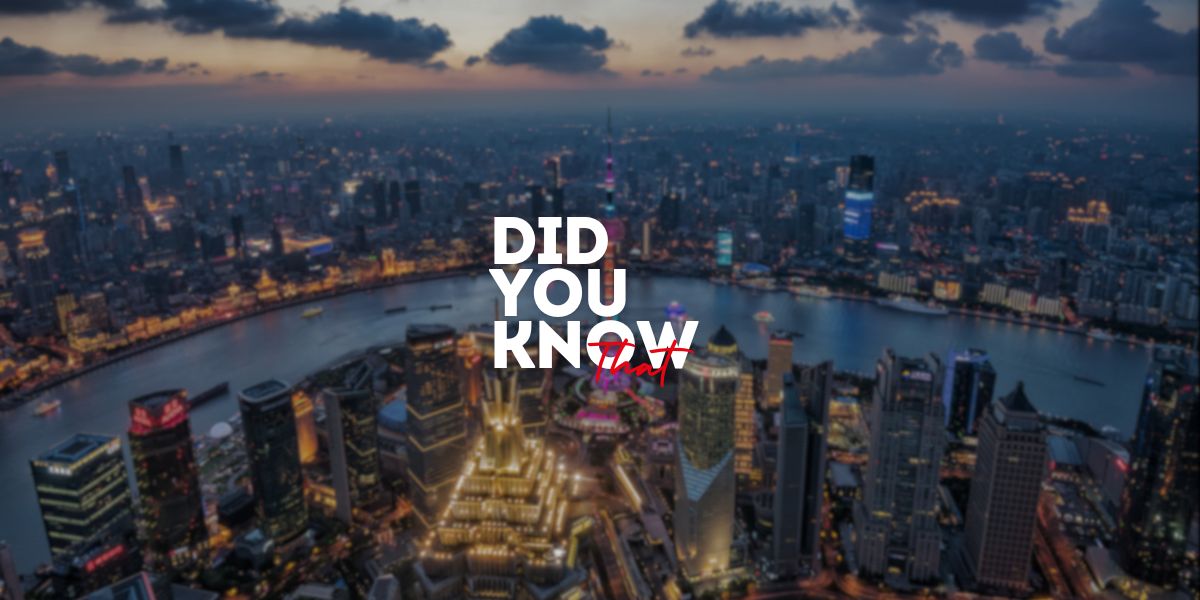Did You Know That | Week 29-30 | 2025



Did You Know That | Week 29-30 | 2025
US and EU could end up in a tit-for-tat tariff retaliation cycle if a deal isn’t reached soon
Did You Know That…
…Transatlantic trade in tariff crosshairs as US-EU deal deadline nears.
·US and EU could end up in a tit-for-tat tariff retaliation cycle if a deal isn’t reached soon
·US importers of EU building supplies and beverages have pulled forward volumes ahead of the tariff deadline
·Outlook for westbound transatlantic spot rates in the second half 2025 is bearish, given first-half 2025 frontloading and potential demand destruction from tariffs.
It’s entirely possible that the US and EU won’t reach a deal in the next two weeks, the US will triple its tariff, the EU will retaliate, and the US will retaliate against the EU. Importers have at least partially prepared for this worst-case scenario by bringing goods across the Atlantic early.
…Hede forges ahead with new China-LA service as rivals cut transpacific capacity.
·Chinese carrier Hede has launched a third China-LA express service in just over a year
·The move comes as rivals trim transpacific capacity amid plunging spot rates and fallout from US tariffs, sparking doubts over Hede’s timing
·Hede is said to remain committed to the trade, despite market challenges and upcoming US port fees.
Hede is expanding its China–US West Coast services with a new Nansha–Los Angeles route, defying collapsing freight rates and industry cutbacks as it doubles down on long-term commitment despite market headwinds and looming US port fees.
…Opportunistic Chinese carrier targets premium cargo with direct Arctic route to Europe.
·Sea Legend will launch a direct Arctic route from China to northern Europe in September, targeting high-value cargo with an 18-day transit
·The move comes amid growing China-Russia cooperation on the northern sea route, despite geopolitical challenges
·Sea Legend shares vessels and operations with its China–Russia specialist partner, Safetrans Line, one of whose vessels crossed Arctic waters last year.
Sea Legend, a fast-growing Chinese carrier known for bold market moves, will launch an 18-day direct Arctic route from China to northern Europe this September. It works in close collaboration with another operator specialising in Russia services.
…South African ports handling more boxes, but challenges remain. Despite handling the highest throughput since 2017/18, South Africa’s ports last week continued beset by operational challenges that “prevented optimal performance” – and the forecast is even less rosy.
…According to a report from our friends of Transolve in Australia, the 2025 Australian wine grape crush is estimated to be 1.57 million tonnes, 160,000 tonnes (11%) more than the 2024 crush, but 140,000 tonnes below the 10-year average of 1.71 million tonnes. The 2025 crush equates to around 1.1 billion litres of wine, which is in line with current sales of Australian wine on domestic and export markets, and the year-on-year increase was driven by red varieties (up 20%), while the crush of white varieties was 2% higher than in 2024.
…With the number of containers handled by the Port of Melbourne forecast to grow from 3 million twenty-foot equivalent container units (TEUs) in 2019 to close to 9 million TEU by 2050, and with the majority of this being delivered at Webb Dock, infrastructure improvements have been announced to support this growth. In response, The Port of Melbourne (PoM) has released its "2050 Port Development Strategy" which includes plans to either add a rail terminal to the Webb Dock or reinstate the previously decommissioned rail corridor in order to create a "Webb Dock Freight Link" to connect the area to rail.
…The latest Drewry World Container Index (WCI) Index decreased 5% to US$2672 per 40-foot container this week. This decline is a direct result of the low demand for US-bound cargo and is a sign that the recent surge in US imports, which occurred after the temporary halt on higher US tariffs, will not have the lasting impact we had initially expected. The following trade routes experienced decreases: Shanghai-Los Angeles (-8%), Shanghai-New York (-5%), Shanghai-Genoa (-7%), Shanghai-Rotterdam (-2%) and Rotterdam-New York (-6%).
…China has commenced work on a multi-billion-dollar railway through Kyrgyzstan and Uzbekistan that will link China more closely with Europe, bypassing Russia. Whilst both Russia and China continue to be allies and are aligned on the global infrastructure-building Belt and Road Initiative, this rail connection is invaluable should factors such as Trump’s tariffs, the Ukraine war and Red Sea volatility become too detrimental to China’s plans for better-connected global infrastructure and efficient trade routes.
…Multiple factors return Rotterdam to top of Europe's box chart. Quick one for port stats nerds – Rotterdam resumed to its position as Europe’s largest container port after releasing half-year figures that show it surpassing nearby competitor Antwerp.
…US-Japan tariff deal still ‘negative’ for trade, say analysts.
·The US-Japan trade deal cuts tariffs on Japanese goods to 15%, still much higher than pre-trade war levels
·Analysts expect little positive impact on container shipping or freight rates, given modest trade volumes and weak demand
·Inclusion of auto sector into US tariff cuts could expand to other trading partners, which will benefit car shipping, but overall market outlook remains subdued.
US-Japan trade agreement lowers tariffs on Japanese goods to 15%, but analysts expect little boost for shipping markets or demand, given higher-than-previous tariffs and subdued trade volumes.
…King meets Modi after India-UK trade deal signed. King Charles has held talks with Indian Prime Minister Narendra Modi at Sandringham, after a free trade deal was signed between the UK and India.
UK cars and whisky will be cheaper to export to India and Indian textiles and jewellery cheaper to export to the UK under the multi-billion pound export boost.
The deal took three years to reach and also commits to a new India-UK plan to tackle illegal migration.
…America’s revenue from customs duties hit a new monthly high of $27bn in June, bringing the total over the second quarter to a record $64bn.
…Boosted by the rush to ship goods abroad, China’s GDP was 5.2% bigger in the second quarter compared with the same three months last year, a slightly better growth rate than economists had expected. The figure masks a sluggish domestic economy.
…Switzerland is ticking towards a tighter deal with the EU. Alarmed voters worry it will limit their tradition of direct democracy. Switzerland and Britain share two qualities: a fondness for cheese, and ambivalence towards the European Union. Lately both countries are contemplating drawing closer to the bloc. But while Britain has taken only a few tentative steps on youth travel and fish, the Swiss are moving towards resetting the entire relationship. At the end of 2024 they concluded negotiations on a deal that would synchronise their complex mechanism of treaties with the EU into a single coherent framework. The Swiss government presented it as a ringing triumph. But some of its citizens, who will eventually have the final say via a referendum, are getting a bit wound up.The agreement between Switzerland and the EU, made public a few weeks ago, will reach parliament this winter.
…Hong Kong reports growth and milestones. Hong Kong International Airport (HKIA) handled 5 million t of cargo in fiscal 2024/25, marking a 10.3% year-on-year rise. The airport retained its title as the world’s busiest cargo hub for the 14th time since 2010.
…Bangladesh exporters face huge rise in box handling charges. Container handling costs are set to surge by as much as 81% for exports out of Bangladesh’s inland container depots from September. The move will affect 93% of the country’s export volumes.
…Shanghai unveils ambitious plan for mega shipbuilding powerhouse.
·Shanghai wants to build a major shipbuilding hub on Changxing Island by 2027, where state-owned CSSC already has a strong presence
·The government’s plan targets the construction of high-value ships like LNG carriers, breakthroughs in core technologies, and greater industrial clustering
·But the initiative faces challenges from a market decline, fierce competition, and geopolitical uncertainties.
Shanghai is pushing ahead with an ambitious government-backed plan to turn Changxing Island into a world-class shipbuilding hub by 2027, focusing on high-value vessels, technological breakthroughs, and industrial integration, even as the sector faces global competition and economic headwinds.
…To survive the AI age, the web needs a new business model. Artificial intelligence has undermined the internet’s central bargain. This week Hollywood released details of a new film about Sam Altman and the rise of OpenAI, whose launch of ChatGPT in late 2022 has brought high drama to the tech world. One of the most important effects of artificial intelligence (AI) so far is surely on how information is spread online. Instead of typing their questions into search engines, people increasingly pose them to chatbots. Google, which a year ago started adding AI-generated summaries to its results, promises that users can “let Google do the Googling for you”. This revolution promises to bring more knowledge more quickly to more people. Users are right to embrace it. But there is a sting in the tail. As AI-powered search engines remove the need for people to trawl the web looking for sites with answers, they are stopping the flow of traffic to those pages. Those lost visitors mean lost money. The danger is that, as answer-engines take readers away, they are removing the incentive for content to be created. The technology that is opening up the web also threatens to kill it.
…China’s smartphone champion has triumphed where Apple failed. Having conquered carmaking, Xiaomi now has its sights set on world domination. Ever since he co-founded Xiaomi in 2010, Lei Jun, the chief executive of the Chinese tech giant, has pulled off feat after feat of salesmanship. A decade ago he earned a Guinness World Record for selling 2.1m smartphones online in 24 hours. These days, though, he is not just flogging cheap phones. Last month Xiaomi sold more than 200,000 of its first electric SUV, the YU7, within three minutes of bringing it onto the market. Xiaomi’s rise over the past few years has been vertiginous. Only Apple and Samsung sell more smartphones worldwide. The company also peddles a vast array of devices that connect to its handsets, from air-conditioners and robo-vacuums to scooters and televisions. After a slump in 2022, which it attributed to “cut-throat competition” in China for consumer electronics, Xiaomi has roared back to growth: its revenue increased by 35% last year. Since the beginning of 2024 its market value has nearly quadrupled, to HK$1.5trn ($190bn; see chart).
…EU ports sound alarm as ETS pushes traffic toward transhipment rivals.
·EU ports raise concerns carriers are rerouting to avoid ETS costs, resulting in carbon leakage rather than emissions reduction
·Revised ETS directive includes neighbouring ports but cost advantages remain
·Cost savings can exceed $100,000 per voyage by calling non-EU ports
·European shipping lines are investing heavily in non-EU hubs, with 17m teu of new capacity in the pipeline.
Europe’s maritime emissions policy is triggering a reshuffle in Mediterranean shipping lanes, as carriers increasingly commit more tonnage to non-EU hubs amid the cost advantage over ETS levies. With billions of dollars invested in rival ports, EU transhipment hubs warn of lasting damage to competitiveness.
…6 x 8 is the sum in the multiplication tables that children get wrong most.
…This DYKT news bulletin will be published on the website as well, go to www.eaanetwork.com.
Have a good Friday and weekend ahead !